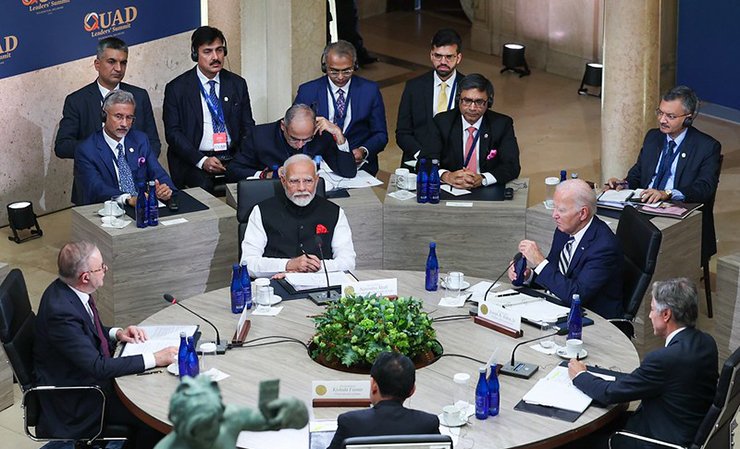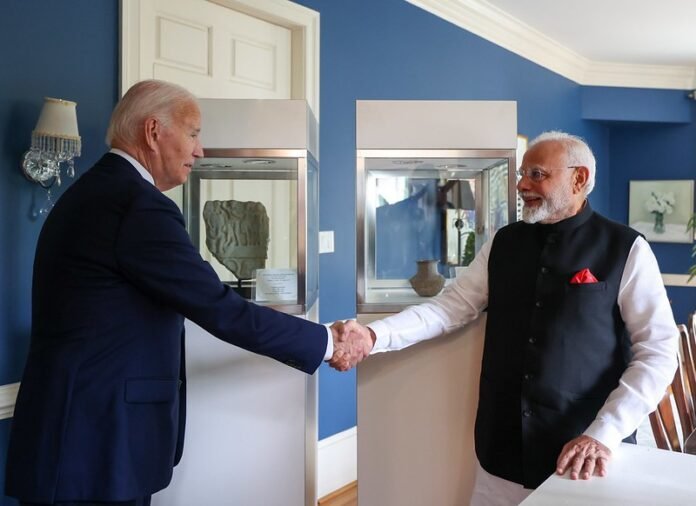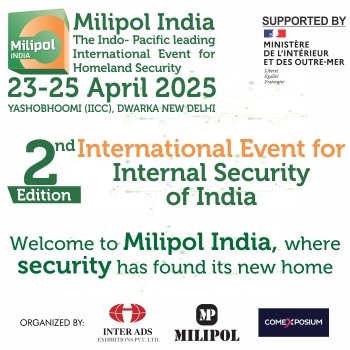Just ahead of the US visit by Prime Minister Narendra Modi to attend the Quad Summit and address the UN General Assembly on the world body’s 79th anniversary, a New York court issued summons to NSA Ajit Doval, ex-RAW chief Samant Goyal, security official Vikram Yadav and a businessman Nikhil Gupta who is already being held by the US Department of Justice at a Brooklyn jail.
Summons was issued on September 18 following a lawsuit filed by Gurpatwant Singh Pannun, a US-based Sikhs for Justice founder and India-designated terrorist in the context of an alleged assassination plot against him. While India was taking note of it, a group of Sikh activists met White House officials on September 19.
These developments were not taken nicely by India, especially when Prime Minister Modi was scheduled to visit the US. Although the Ministry of External Affairs termed summons against the NSA and others as “completely unwarranted and unsubstantiated imputations,” analysts and experts saw White House officials’ meeting with Sikh activists who support separatism as “gratuitous.”
On the face of it, absence of Ajit Doval from the prime ministerial entourage clearly suggested that India was reading tea leaves very closely. For the first time, a well-managed tradition of including NSA Doval in Prime Minister Modi’s team during a foreign visit was broken, though, no formal summons was served to either Ajit Doval or Samant Goyal or two other Indian nationals.
It should be recalled that this is not the first time, a US court has issued summons to Indian nationals. Former Prime Minister Manmohan Singh, Congress leader Sonia Gandhi, former Union Minister Kamal Nath have been served summons over the 1984 Sikh riots and Narendra Modi over the 2002 Gujarat riots. Such summons was squashed as the US State Department invoked immunity for dignitaries, leaders and serving officials.
Despite all this, India managed to have a successful relationship with the US and during the just concluded visit to America, Prime Minister Modi spared no moment in making his three-day trip a memorable event. His first official engagement soon after landing in Philadelphia was bilateral meeting with President Joe Biden at the latter’s residence in Wilmington. The bilateral meeting between Prime Minister Modi and President Biden set the tone up for future trajectory of India-US relations.
India-US Semiconductor Voyage
As both leaders, apart from discussing issues related to global concerns, including Ukraine and Middle East, hailed India-US joint efforts to establish a new semiconductor fabrication plant focused on advanced sensing, communication, and power electronics for national security, next-generation telecommunication, and green energy applications. Foreign Secretary Vikram Misri described it as “an enormously encouraging development.”
However, adding strength to India’s semiconductor forays came the US administration’s backing of joint efforts of the two countries in developing resilient, secure, and sustainable semiconductor supply chains including through GlobalFoundries’(GF), which is setting up GF Kolkata Power Centre in Kolkata.
On the face of it, absence of Ajit Doval from the prime ministerial entourage clearly suggested that India was reading tea leaves very closely
Amid this, India’s semiconductor mission received a fresh boost as the US Department of State and the South Asian country’s Ministry of Electronics and Information Technology have joined hands for the International Technology Security and Innovation (ITSI) Fund. This fund aims at the development and adoption of secure and trustworthy telecommunications networks, while at the same time, ensuring semiconductor supply chain security and diversification.
Future Oriented Defence Partnership
While welcoming India’s decision to procure 31 General Atomics MQ-9B (16 Sky Gurdian and 15 Sea Guardian) remotely piloted UAVs, Prime Minister Modi and President Biden noted progress under US-India Defence Industrial Cooperation Roadmap, including ongoing collaboration to advance priority co-production arrangements for jet engines, munitions, and ground mobility systems.
Fact Sheet issued jointly by India and the US said both leaders hailed efforts to expand the scope of defence industrial partnership between the two countries for co-development and co-production of unmanned surface vehicle systems to strengthen undersea and maritime domain awareness.
Regarding collaboration between the two countries in the area of defence innovation, they drew attention towards the India-US Defence Acceleration Ecosystem (INDUS-X) initiative which was launched in 2023.
In this background, the two leaders stressed on building a defence innovation bridge under INDUS-X through the launch of “joint challenges” designed by the Indian Ministry of Defence’, Defence Innovation Organisation (DIO) and the Department of Defence of the US’s Defence Innovation Unit.
They hailed ongoing efforts to strengthen military partnership and interoperability between the two countries to maintain a free and open Indo-Pacific. India hosted most complex and largest tri-service exercise with the US in March 2024.
Both leaders, apart from discussing issues related to global concerns, including Ukraine and Middle East, hailed India-US joint efforts to establish a new semiconductor fabrication plant focused on advanced sensing, communication, and power electronics for national security
During the just concluded bilateral military YUDH ABHYAS exercise, the US army displayed the performance of Javelin and Stryker systems. Held between September 9 and September 22, YUDH ABHYAS 2024 exercise was significant as it saw increase in the scope and complexity of the joint military drills in terms of troop strength and equipment.
Since dynamics of warfare is changing very fast with experts maintaining that the future war will be fought using space and cyber technologies, India and the US have begun working towards advanced domains of defence. The two countries held the second Advanced Domains Defence Dialogue in May 2024. They are gearing up to conduct bilateral cyber dialogue in November 2024. Areas of new cooperation will include threat information sharing, cybersecurity training, and collaboration on vulnerability mitigation in energy and telecommunications networks.

Quad Summit
It was the 6th Quad Summit and the fourth in-person Summit since 2021, with US President Biden categorically maintaining that the Quad is going to stay beyond his term with India scheduled to hold next summit in 2025.
Premising its objective as a “Global Force for Good”, with leaders advancing the cause of health-related issues right from waging a successful war against the Covid-19 pandemic to now committing to address cancer in the Indo-Pacific region, the Quad is setting an example of being a group which is concerned about humanity and its well-being.
It is implicit in the Quad Vaccine Partnership to enhance prevention, early detection, and response to potential disease outbreaks and launch of Quad Cancer Moonshot, a collective effort to leverage public and private resources to “reduce the number of lives lost to cancer in the Indo-Pacific, with an initial focus on cervical cancer,” Fact Sheet issued after the Quad Summit said.
As dynamics of warfare is changing very fast with experts predicting that the future war will be fought using space and cyber technologies, India and the US have begun working towards advanced domains of defence
Indeed, right from pandemic preparedness, fighting cancer and mpox outbreak to humanitarian assistance, and disaster relief, commitment to deliver quality, resilient infrastructure to Indo-Pacific region, deployment of Open Radio Access Network, enhancing climate clean energy cooperation with Indo-Pacific partners and close partnership in the field of cyber and space, the Quad has come a long way in deepening its reach and influence in the region.
Yet, what alarms China is the group’s growing engagement with partners throughout the region to bolster maritime security, improve maritime domain awareness and uphold a free and open Indo-Pacific.
To improve interoperability in the Indo-Pacific, the Indian Coast Guard, the US Coast Guard, the Japan Coast Guard, and the Australian Border Force have planned to launch a first ever Quad-at-Sea Ship Observer Mission in 2025.
Riled by such announcements, China’s Foreign Ministry Spokesperson Lin Jian said Quad is “a tool the US uses to contain China and perpetuate US hegemony. The Indo-Pacific strategy attempts to patch up forces to exclude and contain China by peddling the “China threat” narrative, and Quad tries to muster military and security cooperation under the pretext of maritime issues – same intention, same tactics.”
He further added, “Though the US claims that it does not target China, the first topic of the summit is about China and China was made an issue throughout the event. The US is lying through its teeth and even the US media does not believe it.”
The Quad Summit set an example of being a group which is concerned about humanity and its well-being, premising its objective as a “Global Force for Good”, with leaders advancing the cause of health-related issues right from waging a successful war against the Covid-19 pandemic to now committing to address cancer in the Indo-Pacific region
in view of Beijing’s aggression in the South China Sea and the East China Sea. Under the imaginary nine-dash line, Beijing lays its claim over more than 90% of the South China Sea, ignoring territorial claims of the Philippines, Vietnam, Malaysia, Brunei, Taiwan, and Indonesia in this Pacific water body. It refused to accept the July 2016 ruling of the Permanent Court of Arbitration at The Hague which favoured the Philippines’ claim, determining that major elements of China’s claim including its nine-dash line, recent land reclamation activities, and other activities in Philippine waters were unlawful.
Similarly, China lays claim on the East China Sea, rejecting Japan’s sovereign claim over the region. It has increased its aggression in the waters around Senkaku island. Instead of handling any dispute peacefully through dialogue, China wants to settle it through coercive methods. And, this is what Quad objects against China.
“As four leading maritime democracies in the Indo-Pacific, we unequivocally stand for the maintenance of peace and stability across this dynamic region, as an indispensable element of global security and prosperity. We strongly oppose any destabilising or unilateral actions that seek to change the status quo by force or coercion,” joint statement from Quad leaders said, without taking China’s name explicitly.
Meaning is clear, China is an elephant in the room and Quad wants to make it clear that though it represents itself as “Global Force for Good”, and not an Asian NATO, it stands against any application of military power or any other coercive methods to fulfil its expansionist design in the Indo-Pacific.
The visit was filled with substance and symbolism, with PM Modi imparting personal touch to every activity. But he came back without meeting former US President Donald Trump and Vice President Kamala Harris
All in all, PM Modi’s US visit was marked with hectic 72-hour activities, which included bilateral meetings with the Japanese and Australian Prime Ministers on the sidelines of the Quad meeting in Wilmington.
He attended community programme in New York, held roundtable meeting with tech CEOs, addressed the UNGA, met with President and General Secretary of the Communist Party of Vietnam To Lam and Ukrainian President Volodymyr Zelenskyy and bilateral meetings with the Prime Minister of Nepal, the Crown Prince of Kuwait and the President of Palestine.
The visit was filled with substance and symbolism, with PM Modi imparting personal touch to every activity. But he came back without meeting former US President Donald Trump and Vice President Kamala Harris – both presidential candidates in the US election which will take place on November 5. His tight schedule might be the reason behind his decision to not meet them, argue some experts.
–The writer is a senior journalist with wide experience in covering international affairs. The views expressed are of the writer and do not necessarily reflect the views of Raksha Anirveda

















